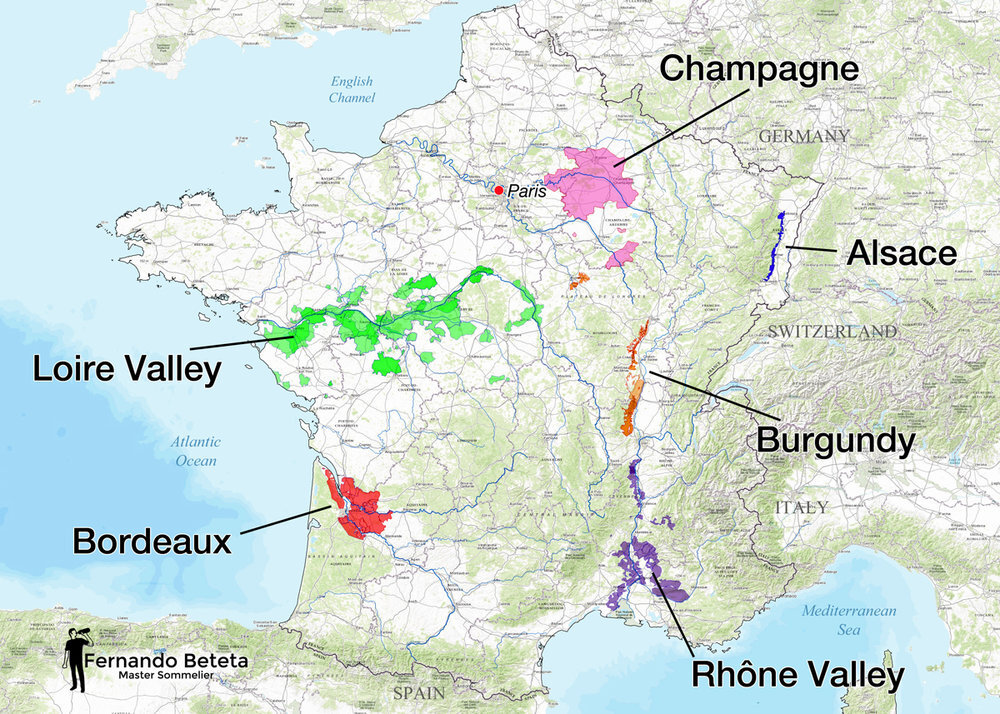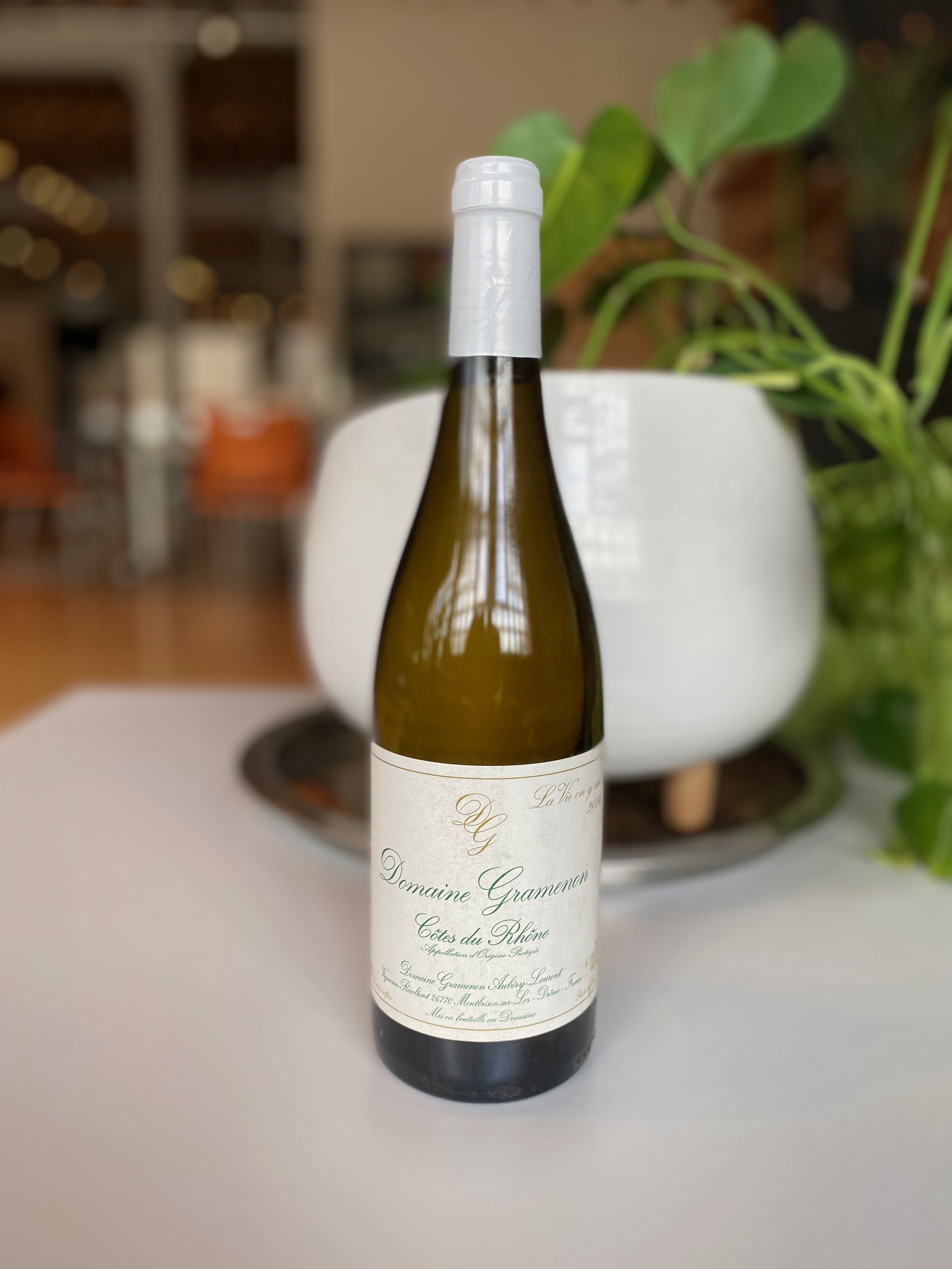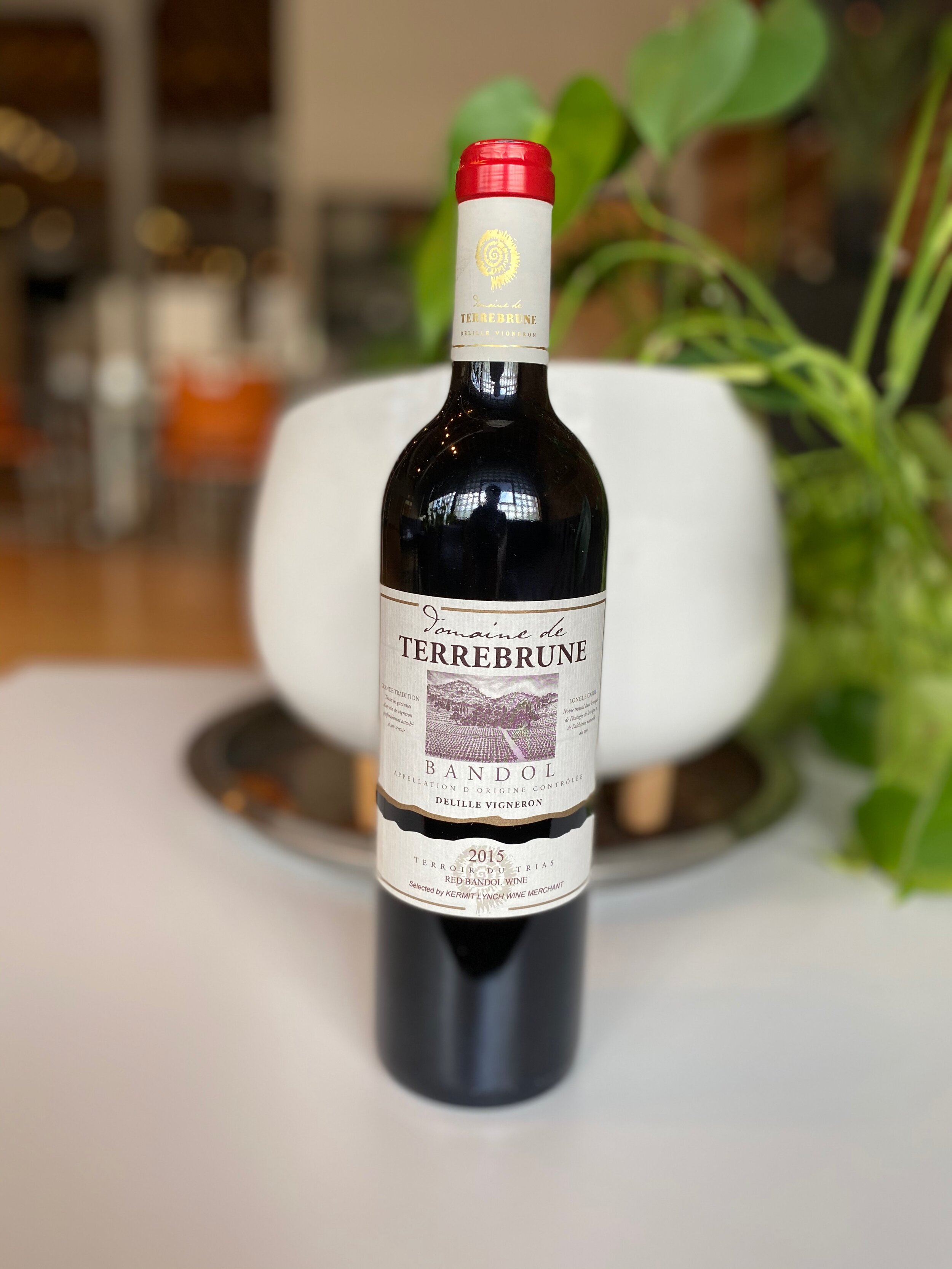France is by far the benchmark for fine wine in the world. It produces all the classic styles of wines from sparkling, whites, reds and rosés. Sweet, dessert wines to aromatized fortified ones, the list goes on and on.
France also has so all the OG grapes and regions like Bordeaux, Rhône, Burgundy, Loire Valley, Champagne and Alsace
Learn a little more about Burgundy and French wines from our Study Guide.
Here’s a list of 5 wines from producers we love. They all represent their region well and offer plenty of terroir in the glass.
Vincent Pinard, Sancerre Flores (2017)
Most likely you’ve had a bottle of Sancerre, but we bet you’ve never tried Vincent Pinard. A small family-owned winery making low intervention wines from biodynamically farmed Sauvignon Blanc grapes. They’re located in the town of Bué which is on ancient limestone soils.
Sancerre blanc is usually consistent in quality and is known for high acidity and medium body. These wines are excellent in their youth, but can also develop character with bottle age.
Vincent Pinard grew up in a small town in the Loire called Bué, in the heart of the Sancerre wine region. Bué has limestone and clay-limestone (the renowned Kimmeridgean terres blanches) soils, which produce more structured and powerful wines.
The Pinards have been passing down winemaking techniques for generations, with the goal of always creating the most precise, pure and fine wines possible. While many wineries are reverting to these natural winemaking practices, the Pinards have been implementing these methods for hundreds of years on their 17 hectares. They do everything as naturally as possible; intervene as little as feasible, limit yields, harvest by hand, and do not use herbicide, insecticides or anti-rot treatments. They believe that if the fruit is healthy, there is no need to use artificial products during the vinification process. With every vintage, the Pinards want to continue to improve the quality of their wines.
Domaine Gramenon, Côtes du Rhône Vie On Y Est (2014)
The seemingly reserved façade of Michèle Aubèry-Laurent melts away quickly when she speaks about her wines. As a former nurse (who often favored natural remedies), she has come to treat her vines with the same care, conviction, and passion as she had for her former patients. She and her husband, Philippe, bottled their first vintage of Domaine Gramenon in 1990, in the far northern-eastern stretches of the southern Rhône, in the town of Montbrison-sur-Lez. Philippe was a talented vigneron—both creative and edgy—and he loved to push the envelope of the regulations imposed by the I.N.A.O. In 1999, in an unexpected twist of fate, he was killed in a tragic accident. Michèle was suddenly left on her own with their three children, vineyards, and a winery to deal with. Crushed but undaunted, Michèle stepped to the forefront, boldly picking up where Philippe left off. Over the years, Michèle has discovered her own creative voice in her new vocation; in so doing she has catapulted Domaine Gramenon into cult wine status. Today, she works twenty-six hectares with her talented son, Maxime François (a rising star in his own right), farming both young and very old vines alike. They employ organic and biodynamic practices in the vineyards, with a strong non-interventionist stance in the cellars. Maxime François has begun flexing his own creative muscle, bottling two cuvées at the domaine under his own name.
Domaine Gramenon is the authentic embodiment of the philosophies that the Laurents espouse. They do not merely champion organic farming, but they incorporate the concept of sustainability into their daily lives by growing their own food and raising their own animals. The domaine bottles an AOC Vinsobres and a myriad of parcels of Côtes-du-Rhône located around the domaine. Though Michèle and Maxime continue to test the confines of the appellation, the cellars are unsurprisingly old-fashioned. The Laurents use gravity-fed cuves and age their wines in oak demi-muids and foudres. That they take such gutsy risks as bottling old-vine fruit with so little sulfur, without fining or filtration, only demonstrates the lengths they will go to in order to highlight the freshness, purity, and intoxicating aromas of their small, rare production.
La Vie on Y Est is a 100% Viognier grown on various soils, from clay, sand and limestone. Minimal intervention, with élévage in used barrels. This wine has hazelnut, marzipan aromas, reminiscent of an Hermitage blanc, five times the price. The 2104 is drinking delicious now with years of life left in the bottle.
Domaine de Terrebrune, Bandol (2015)
Bandol is famous for their hearty red wines made from a blend of Mourvèdre, Grenache, and Cinsault. This region is located in the southern coastal region of Provence. Warm Mediterranean climate helps mature the red grapes, yet the hot summers beg to drink white and rosés. Therefore, many of the wines from Provence are associated with Rosé.
Terrebrune winery is located on vineyards that have rich red clay, which gives the estate its' name.
Bandol is a perfect pairing with Bouillabaise, grilled vegetables, Italian dishes and hard cheese.
Blend:: 85% Mourvèdre, 10% Grenache, 5% Cinsault
Vine Age: 20 years average
Soil Type: Limestone pebbles in brown clay, blue limestone bedrock, marl
Farming Type: Organic (certified)
Domaine de Beaurenard, Châteauneuf-du-Pape Rouge (2017)
Frederic and Daniel Coulon continue a family tradition, now representing the domaine's 7th generation. The brothers are obsessive, providing great attention to detail. All of Beaurenard's vineyards practice biodynamic farming. The style is restrained and stoic, even in hot vintages. Grapes are hand-picked with extremely low yields (just under 3 tons/acre). This flagship cuvée is a blend of the 13 allowed grapes that are co-fermented in concanical vats, then aged for a period in large wooden foudres and small barriques.
Notes of garrigue, cassis, cherry and spice are evident now, with patience in bottle, the wine will develop earthy aromas and balanced tannins.
Château Fombrauge, Saint-Émilion Grand Cru Classé (2016)
The first written mention of Château Fombrauge dates back to the end of the Hundred Years War, which ended in 1453 in Castillon La Bataille.
Monsieur Bernard Magrez's acquisition of Fombrauge in March 1999 brought new perspectives for this Grand Cru de Saint-Emilion in terms of product quality and expertize, and in terms of communication, as Château Fombrauge returned to the Bordeaux wine market.
In September 2012, the Château received the highest award for the Saint Emilion appellation when it was officially classified as a Grand Cru Classé, the crowning glory for all the hard work and investment undertaken to improve the estate.
The estate is planted to 90% Merlot, 5% Cabernet Franc and 5% Malbec. This powerful wine has loads of dark fruits, ample tannins, muscle and length. A show stopper Bordeaux that’s amicable in price.






